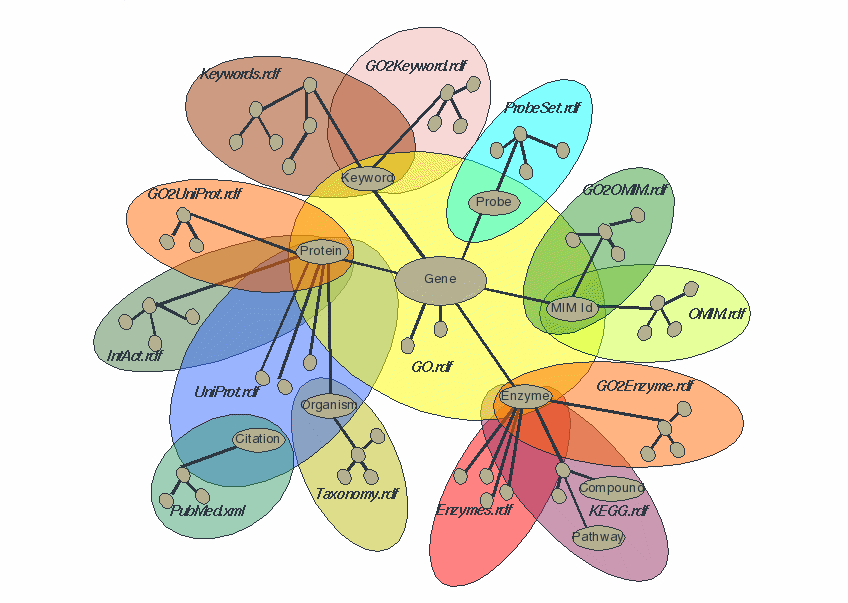Web future
Building beneficial weblike things
http://www.w3.org/2006/Talks/0314-ox-tbl/
Tim Berners-Lee
MIT Computer Science & Artificial Intelligence Laboratory (CSAIL)
Southampton Dept of Electronics and Computer Science
This talk
- Philosophical engineering
- The Web
- The Semantic Web
- The future
Philiosophical Engineering
- cf. Experimental Philosophy
- Microscoopic rules
- Macroscopic behaviour
- Connection between them
- Synthesis vs Analysis
- Rules are social as well as technical
Example: eMail
- Technical Rules: store & forward, no trust infrastructure
- Social Rules: don't bother people
- Scales in acedemic environment
- Doesn't scale in commercial environment
Web rules
Technical:
- Use URIs for documents and anchors
- Ladder of authority to interpret
- Use standards (HTTP. xHTML, SVG, CSS, DOM, XSLT, ...)
Social:
- Serve useful stuff
- Make useful links
- Intellectual property, libel & fraud laws
Wiki
- micro: A simple editor
- micro: Citizen's responsibility
- Macro: Wikipedia
Blogs
- Micro: Trackback
- Macro: The blogoshpere
Semantic Web
Technical:
- Use URIs for documents and concepts
- Same ladder of authority
- Standards: (RDF, OWL, SPARQL*, RIF**)
Social:
- Serve useful stuff
- Make useful links
- Share ontologies
- Agree on ontologies
SW: Everything has a URI
Don't say "colour" say
<http://example.com/2002/std6#col>
The relational database

The element of the Semantic Web

- Can be encoded in XML
- Simplicity and mathematical consistency
- This is called Resource Description Framework (RDF)
Semantic web includes tables,...

...trees

... everything

RDF data...
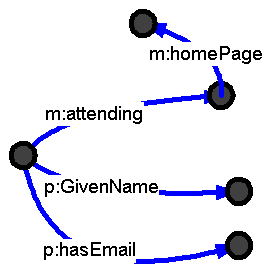
...merges just like that.
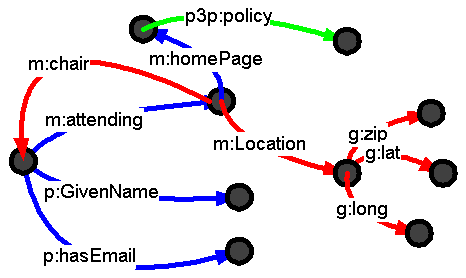
Subject and object node using same URIs
RDF: Semantic links - "Joining the Web"
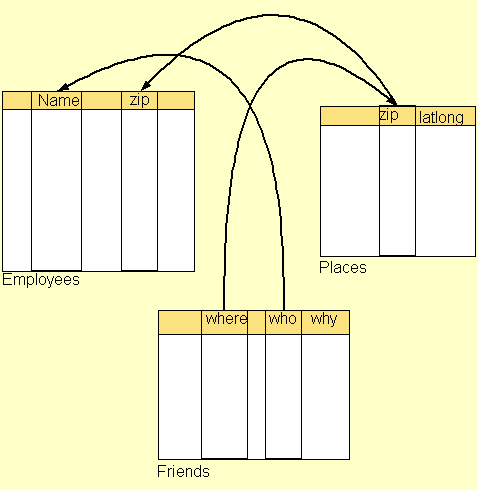
Verb/predicate/Property using same URIs
Communities and Vocabularies
Universal WWW must include communities on many scales
Applications connected by concepts
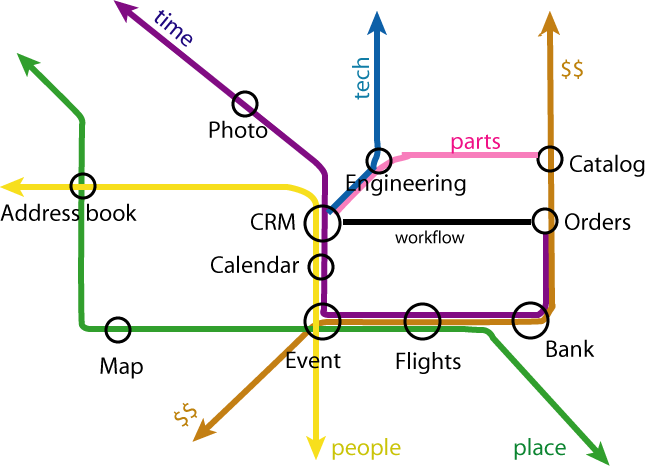
Fractal Web of concepts
- Across boundaries of scale -- personal, group, global
- Varying access levels
- Tension between local and global standards
- Society is a fractal tangle, so must SW be.
- Personal interactions on multiple scales
The semantic web is about allowing data systems to change by evolution
not revolution
Total Cost of Ontologies (TCO)
Assume :-) ontologies evenly spread across orders of magnitude;
committe size as log(community), time as comitee^2,
cost shared across community.
| Scale |
Eg |
Committe size |
Cost per ontology (weeks) |
My share of cost |
| 0 |
Me |
1 |
1 |
1 |
| 10 |
My team |
4 |
16 |
1.6 |
| 100 |
Group |
7 |
49 |
0.49 |
| 1000 |
|
10 |
100 |
0.10 |
| 10k |
Enterprise |
13 |
169 |
0.017 |
| 100k |
Business area |
16 |
256 |
0.0026 |
| 1M |
|
19 |
361 |
0.00036 |
| 10M |
|
22 |
484 |
0.000048 |
| 100M |
National, State |
25 |
625 |
0.000006 |
| 1G |
EU, US |
28 |
784 |
0.000001 |
| 10G |
Planet |
31 |
961 |
0.000000 |
Total cost of 10 ontologies: 3.2 weeks. Serious project: 30 ontologies,
TCO = 10 weeks.
Lesson:
Do your bit.
Others will do theirs.
Thank those who do working groups!
Clients of the RDF bus
New data applications can be built on top of RDF bus, for
example:

Components: Adapting random files
Keep your existing systems running - adapt them

Components: Triple store
Virtual severs actually figure stuff out as well as look up
data

Adapting SQL Databases
Keep your existing systems running - adapt them

Adapting XML
Remember- RDF on an HTTP server can always be virtual

Adapting XML: GRDDL
Remember- RDF on an HTTP server can always be virtual

Components: Smart servers
Virtual severs actually figure stuff out as well as look up
data

Future: Stack of expressive power

The Semantic Web Wave

Why not instant?
- Paradigm shift all over again
- Data is trickier, esp. to design logic languages
- Need for smaller incubator like HEP
- Data is less exciting with no browser
- Fear of having to make ontologies
Good news
- Logic discussions are getting done (OW, SPARQL, RIF,...)
- Life sciences is an incubator community
- TCO is finite
- Startups
- Major vendors are moving it into products
- We have some ideas about actually making a user interface!
When you get home
- Make a FOAF page + give yourself a URI
- Take your own data
- Export as RDF (or SPARQL)
- Include links to related other data
- Tabulate it
Future of Sem Web
- Much more data integration power
- much more policy awareness required
- systems with tarnsparentcy ("Why? How do you know that?")
- Computer analysis of data much more powerful
- work needed on emnergent properties, stability, and
- in general relationship of µrules to Mphenomena<.li>
- New dreams, new systems, new rules
- New field: Web Science
Thank You
More:
w3.org
Thank you for your attention
http://www.w3.org/2006/Talks/0314-ox-tbl/










